Types of Mastectomy
Mastectomy, by definition, is removal of the breast. Just as cancer treatment is individualized, the type of mastectomy is individualized as well. There are several types of mastectomy including radical, simple/total, skin-sparing and nipple-sparing (subcutaneous) mastectomy.
Women who have a high genetic or familial risk of breast cancer may elect to have a preventive mastectomy. Preventive mastectomy is also called risk-reduction or prophylactic mastectomy.
Radical Mastectomy
In the early days of mastectomy surgery, the most common procedure was a radical mastectomy. In a radical mastectomy (Halsted mastectomy) the entire breast is removed along with the underlying chest wall muscles plus lymph nodes in the region. The notion at the time that radical mastectomies were common was that an aggressive procedure was felt to be necessary in order to remove all possibility of cancer. Today, a radical mastectomy is rarely performed. It is now only performed on patients who have advanced breast cancer that has invaded the muscle wall under the breast tissue. This surgery is considered the most disfiguring of the mastectomy procedures, leaving very little tissue other than skin over the rib bones.
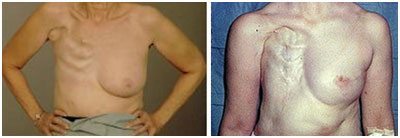
Simple or Total Mastectomy
In this procedure, the entire breast is removed using an elliptical incision 6 to 8 inches in length that begins on the inside of the breast, near the breast bone, and extends upward and outward, either straight or obliquely toward the armpit. When this type of mastectomy is combined with an additional procedure to remove lymph nodes from under the arm it is called a modified radical mastectomy.
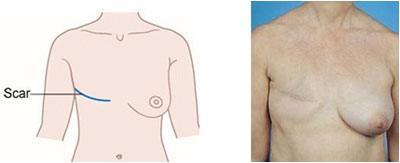
Skin-Sparing Mastectomy (SSM)
This technique preserves the skin of the breast, but not the nipple and areola, which are removed. The breast tissue is then removed through that area. A SSM leaves breast skin intact, while a traditional mastectomy removes much of the breast skin. Both techniques are mastectomies, they remove breast tissue. The basic difference is preservation or removal of breast skin.
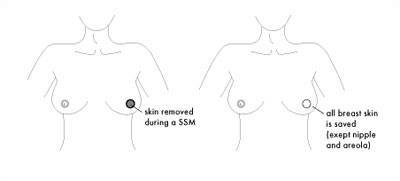
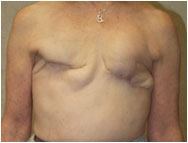
Traditional Mastectomies
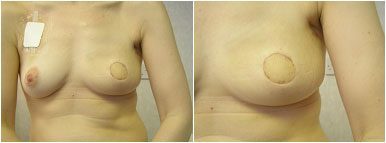
Left skin-sparing mastectomy with flap reconstruction
Even though the opening is smaller, the same amount of breast tissue is removed. Scarring is negligible and 90% of the skin is preserved. The skin sparing mastectomy has the advantage in that it allows for a better primary breast reconstruction. For women with large breasts, an additional incision may be made to allow the breast tissue to be removed, but the vast majority of skin is left behind after surgery. The increased amount of skin preserved as compared to traditional mastectomy resections serves to facilitate breast reconstruction procedures by utilising the native skin envelope to optimise the contour, texture and colour of the reconstructed breast.Skin-sparing mastectomy is almost always combined with immediate breast reconstruction.
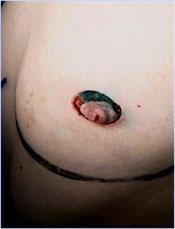
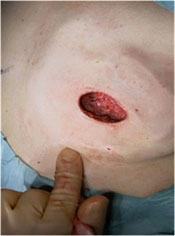
The incision of standard skin-sparing mastectomy
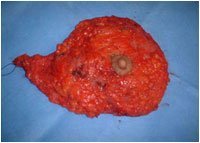
Skin-sparing mastectomy specimen.

Right skin-sparing mastectomy and flap reconstruction
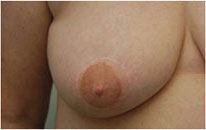
Nipple Reconstruction and areolar tattooing

With an expander/implant reconstruction the scar may be vertical, horizontal or oblique
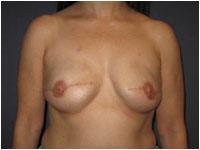
Bilateral prophylactic, skin-sparing mastectomies via horizontal incisions with immediate expander reconstruction (following nipple reconstruction and areolar tattooing)
Nipple-Sparing Mastectomy (NSM)
Nipple-sparing mastectomy, also known in the past as subcutaneous mastectomy, not only preserves the skin of the breast, but the nipple and areola too. The incision to remove the breast tissue can be placed in the fold under the breast where it cannot be easily seen once healed, to the side, or the incision may be made around the areola. Like skin-sparing mastectomy, nipple-sparing mastectomy is almost always performed in conjunction with immediate reconstruction of some type.

Bilateral nipple-sparing mastectomy and implant based reconstructions
In summary, the main difference between the different types of mastectomy is in the amount of skin removed. Skin and nipple-sparing mastectomies are almost always performed in conjunction with immediate breast reconstruction.
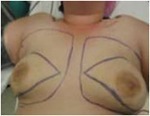 |
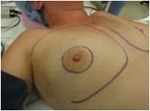 |
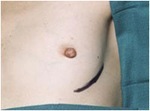 |
| Simple Mastectomy | Skin-Sparing Mastectomy | Nipple-Sparing Mastectomy |
 |
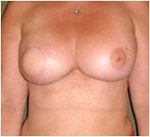 |
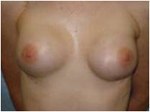 |











